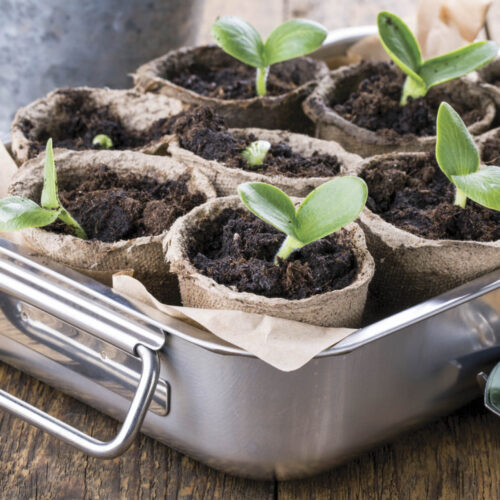A frosty reception
2021-05-25T06:24:55+10:00
When frost comes creeping into your garden, it can ruin all the hard work you've done in a snap! But you can combat the chills of winter.
Frost delights children with its crunchy white lawns (the closest thing to snow for many Aussie kids), but it’s rarely welcomed in the same way by gardeners. Certainly, at the right time, its touch intensifies autumn foliage colour, improves flavour and yield of many brassicas and cool climate berries, and encourages robust bud formation in fruits such as cherries and pears. When it arrives too early, however, it ruins autumn harvests and, if it lingers into spring, shrivels flowers and decimates crops.
Broadacre farmers know frost all too well but its fickleness makes it difficult to predict not least because, according to the Australian Bureau of Meteorology, the disruptive nature of climate change is extending the frost season by two to five weeks across southern Australia. It also concludes that the corresponding frost-related production risk in much of our wheatbelt has increased by 30 per cent. Fortunately, unlike farmers, small-scale home gardeners have plenty of practical techniques to reduce the effects of this capricious visitor. First, though, we must understand it.
What is frost?
Frost is simply ice in the form of frozen dew or delicate white ice crystals (hoar frost) that develop when surfaces drop below freezing point.
‘Radiation’ frost is caused by cooling ground as its heat – absorbed during the day – is lost to the air on clear, cold, still nights without an insulating blanket of cloud or wind to mix the air. Radiation frost occurs near the ground as the temperature inversion forms. This cold, ground-level air is heavier than warm air, and drains like water to settle in depressions and valleys. If you live in a ‘hollow’, your garden may be prone to frosts while neighbours on peaks and slopes are frost-free.
‘Advection’ frost caused by very cold air masses sweeping through is uncommon in temperate Australia but occasionally occurs as icy winds blast from south of
the continent.
‘Black’ frosts also occur in Australia, but only in very cold conditions with dry air. The temperature drops enough to freeze moisture inside vegetation, blackening leaves and growing tips without ice forming on the surface of the plant.
You can’t prevent frost from icing your garden, but you can greatly reduce its impact by careful plant selection, site management and cultivation techniques.
Plant choices
Frost-tolerant ornamentals
Some plants are simply more cold-adaptive than others, with extra compounds in their system to protect cells from damage. Others have leathery leaves and thick bark for physical protection. Sometimes, a widespread native species varies greatly, with individuals hailing from, say, frosty inland regions, being hardier than those from coastal ones. If your garden experiences severe frost, appropriate plant selection rather than site amelioration is your best bet; consider planting endemics growing locally in similar microclimates to your garden.
Many ornamentals originating in the Northern Hemisphere avoid frost by becoming deciduous early and shooting late, so can be good choices. Also try bulbs and herbaceous perennials (anemones, campanulas), and deciduous shrubs (philadelphus, viburnum, maples). Check plant labels for frost tolerance and ask nursery staff if you’re unsure.
Frost-loving edibles
In productive gardens, frost plays havoc with warm climate and subtropical species. Instead, choose fruits and vegetables that relish a bit of frost.
Most cool climate vegetables improve in flavour with frosts. It is important to time your planting of root vegetables (swede, turnip, parsnip) and brassicas (kale, brussels sprouts, cabbage) so they are well established when the first frost arrives. Rhubarb, Jerusalem artichoke and potatoes are deciduous, but plant them to avoid new growth being killed by a late frost. In herb gardens, try deciduous lemon verbena and elderberry, and herbaceous perennials that die back in winter, such as lemon balm, tarragon, valerian, mint, sorrel and chives.
Flowering times
Early maturing and late-flowering cultivars are another way to trick frost when the plant is hardy, but its flowers or fruit are not. For example, almond trees all flower very early, and frost destroys their delicate blossoms, but plenty of cherry, apple and pear cultivars flower late. Similarly, broad bean and pea plants tolerate frost but their flowers are more delicate, so you have a narrow fruiting window!
Hardening off
‘Harden off’ plants before placing into their final position. Nursery plants coddled under shade cloth have soft growth that’s susceptible to all extremes of temperature, from scorching heat to frost. Buy plants outside frost seasons, or place pots in an intermediate spot for a month so leaves thicken and ‘harden’. Buying older and more mature plants that are taller and above the frost zone with tougher leaves and stems is another trick.
Plant rescue
- Don’t rush to prune frost-damaged material on large shrubs as it helps protect healthy growth within.
- Be patient: a plant may appear dead but many woody ones happily reshoot further down the stem.
- Cover plants with vegie net to prevent further damage. Aid recovery with generous applications of liquid seaweed, but avoid heavy doses of fertiliser to stressed plants.
This feature was first published in Issue 102 of Organic Gardener magazine but we thought worth visiting this time of year as it’s getting very chilly out there!






